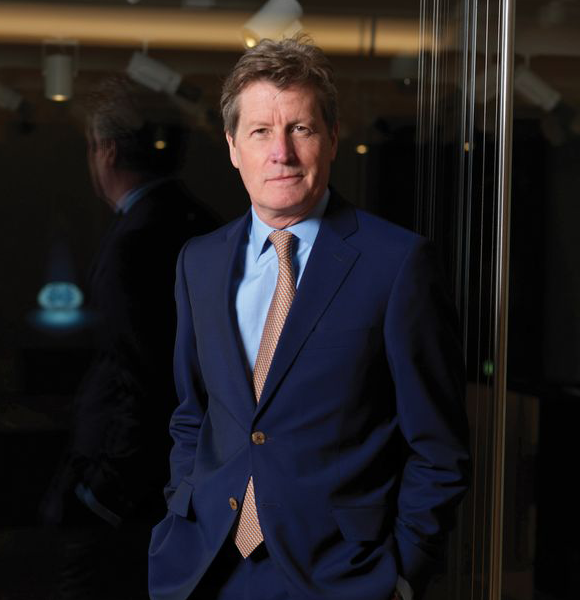Interview with Matthew Girling, former CEO of Bonhams

Matthew Girling is the former CEO of luxury auction house Bonhams, and he has also worked at Christie’s and on the retail side of the luxury jewellery market during his career. Having had plenty of experience dealing with high net-worth clients across the art, design, automotive and jewellery markets, he offers a clear perspective about the current climate in the luxury world, and how wider trends may impact shopping habits.
In trying to understand the needs of the luxury consumer, Girling believes there are two different types of buyer to consider: those who want to be part of the club, and those who want to be in a league of their own, above the club.
“There are two different types of people who buy into luxury, the first is one who wants their purchase to be highly identifiable. For example, look at Damien Hirst, each one of his works are immediately identifiable – you have automatically joined a club by owning his work.
“And then, with greater confidence comes the need to be different. This is the luxury consumer who no longer needs the Damien Hirst. For them, it’s about wanting something that shows that they have moved on from the norm, they want something more unique and special. Not everybody will understand or recognize this purchase, and because of that, it puts them in a separate category altogether.”
When you consider which brands do well in appealing to the needs of both of these luxury consumers, Girling says you need to look at what the big players in the fashion world have been able to do. They have created something which is now difficult to replicate and therefore difficult to compete with.
“The major brands, like LVMH, enjoy a dominance because they are long established, and have been able to take advantage of traditional marketing initiatives, including print media, which has become less relevant, but initially helped to build them up into the powerful brands that they are today.
“They also have an advantage because they were able to buy up most of the pre-existing brands, some of which are over 100 years old, with established cachet behind the names. Because fewer of these brands are available today, somebody new coming to market has to try to create that cache, recreate the history, which is not easy to do.”
However, although competing with historical significance and established cache is not easy, Girling says it is possible. This is something we have seen very clearly in other markets, specifically with cars and with auction houses.
“Nobody believed that a new manufacturer could compete with the historic car brands but look how McLaren has challenged the dominance of Ferrari,” he says. “And, in the auction world, Christie’s and Sotheby’s have dominated for over 200 years, but as the market has become more segmented, it has given opportunity for a niche player to challenge. There now seems to be no area of the luxury market where the historic brands can’t be challenged.”

He believes that the brands which are too broad are those which will struggle to compete going forward – appealing to that luxury customer is about tapping into something more personal.
“If you look at the old British brand Asprey, which sells all sorts of different products, it is difficult for them to hold onto customers in a world of specialty offerings in retail. Owning such a broad base of different things makes things more difficult.”
It is therefore the brands who have a more specialised approach who will be able to compete in luxury, Girling argues. He says this trend is very clear to see if you look at the Asian market, which once replicated the Western world habits, but has become more unique.
“If you look at new buyers or a new geography, for example in the Asian market, there was a great deal of comfort in believing that they were buying things that were in the living rooms, in the wardrobes, in the garages of a Western market. That has evolved to find its own feet, identity and confidence. They now longer need to buy something from Europe and the US. The market is now more individualistic, segmented and personal. That comes with confidence in your own environment, in your own status.”

Because of this, “the big brands can no longer get away with a homogeneity, they need to be much more focused regionally”.
Brands will succeed by appealing to the uniqueness of the consumer, giving room for them to express themselves through their purchases, but they will also have to take note of some of the wider trends impacting the market, of which environmental and social issues are the most important, Girling says. The pandemic too has catapulted many changes forward, something he has witnessed first-hand in the art world with the embrace of digital – and we can expect these new habits to remain.
“There are changes in the art world which are irreversible – they are not new issues, but the pandemic has condensed those ideas that we already had and accelerated them. It has shown how business can evolve and, in some cases, be much more efficient than they were before.”